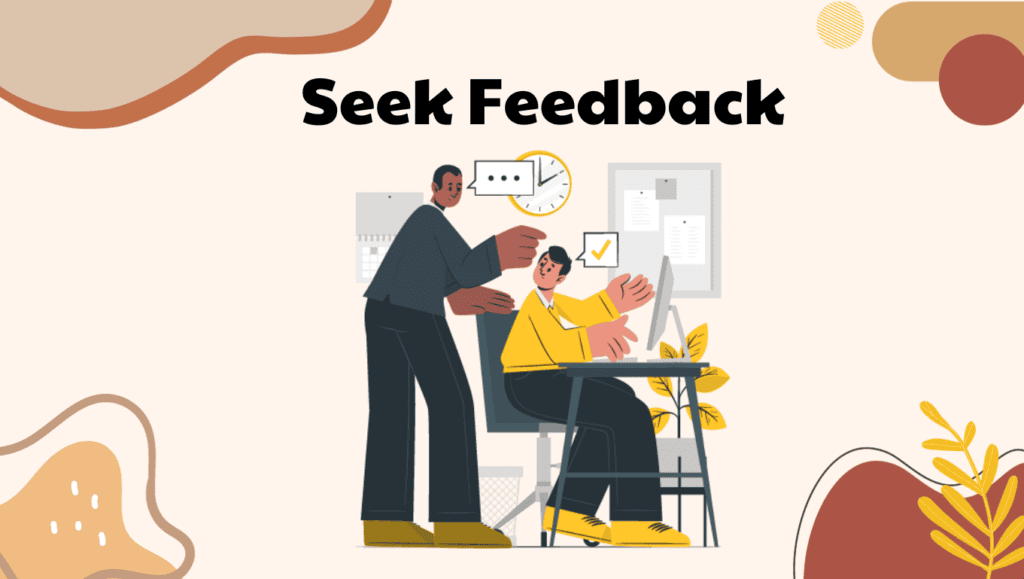Do you dream of bringing characters to life, making them dance, laugh, and cry on screen?
Animation is a captivating art form that has the power to transport audiences to fantastical worlds and tell compelling stories.
The power of animation continues to captivate audiences worldwide. According to a recent study by Statista, the size of the animation market worldwide will continue to grow throughout the decade, surpassing 587 billion dollars by 2030.
Whether you’re a beginner venturing into the enchanting world of animation or a seasoned pro looking to enhance your skills, this guide is your key to unlocking the secret tips of animation.
Table of Contents
- 13 Best Animation Tips for Beginners
- 1. Start with the Basic Principles
- 2. Master the Fundamentals
- 3. Use Reference Material
- 4. Animate in Stages
- 5. Emphasize Key Poses
- 6. Learn Your Tools
- 7. Seek Feedback
- 8. Stay Consistent
- 9. Understand Your Audience
- 10. Experiment with Different Styles
- 11. Join Animation Communities
- 12. Focus on Storytelling
- 13. Practice Regularly
- Top 12 Animation Tips and Tricks for Pros
- Conclusion:
13 Best Animation Tips for Beginners
1. Start with the Basic Principles

Every animation masterpiece begins with a solid understanding of the basics. Before delving into complex techniques, ensure you have a firm grasp of basic concepts such as timing, spacing, keyframes, and animation principles. These foundational elements serve as the building blocks for your creative endeavors.
To kickstart your animation video journey, familiarize yourself with the 12 principles of animation. These principles include Squash and Stretch, Anticipation, Staging, Straight Ahead Action and Pose to Pose, Follow Through and Overlapping Action, Slow In and Slow Out, Arcs, Secondary Action, Timing, Exaggeration, Solid Drawing, and Appeal. Understanding the basics will breathe life into your characters, making them move with fluidity and realism.
2. Master the Fundamentals
Animation, at its core, is the art of creating the illusion of movement. To master this art, focus on honing your drawing skills and understanding the anatomy of characters. The ability to convey emotion through facial expressions and body language is crucial for crafting compelling narratives.
Experiment with frame-by-frame animation, a technique that helps you to control each frame’s movement manually. This hands-on approach enhances your animation skills and empowers you to create nuanced and captivating sequences.
3. Use Reference Material
Drawing inspiration from the world around you is a key aspect of animation. Observing real life movements, whether it’s the way leaves rustle in the wind or the subtle gestures of people, adds authenticity to your animations.
For a character’s facial expressions, record your own reactions or explore online resources for reference. Analyzing these real-life nuances allows you to easily infuse your characters with genuine emotion and personality.
If you’re facing challenges capturing your own reference material due to camera issues, or receiving a ‘there is no connected camera‘ error can be a hurdle in your animation journey. If you find yourself stuck at this point, don’t worry – it’s a minor setback easily resolved by following the steps in our guide.
4. Animate in Stages
Breaking down complex animations into stages makes the process more manageable. Start with rough sketches to outline the overall motion and then refine each stage progressively. This incremental approach ensures a smoother workflow and allows for easier adjustments as you fine-tune your animation.
Animating in stages not only simplifies the process but also enables you to identify and address issues early on. This meticulous approach contributes to the creation of polished and professional-looking animations.
5. Emphasize Key Poses
Effective storytelling through animation relies on conveying emotion and narrative through key poses. Identify the crucial moments in your animation – the poses that encapsulate the character’s essence or define a pivotal scene. Prioritize these poses, ensuring they are well-defined and impactful.
The use of strong key poses serves as a visual anchor for your audience, guiding them through the narrative with clarity and emotion. This emphasis on key poses elevates the storytelling aspect of your animations, making them more engaging and memorable.
6. Learn Your Tools
Becoming proficient with your chosen animation software is essential for bringing your creative visions to life. Explore the features and functionalities of popular animation software like Adobe Animate, Toon Boom Harmony, or Clip Studio Paint. Familiarity with these tools empowers you to bring your visions to life seamlessly.
Experiment with different brushes, layers, and effects within the software to discover your preferred workflow. As you become more adept at navigating the digital canvas, creating intricate animations becomes an intuitive process.
7. Seek Feedback

One thing you shouldn’t overlook is feedback. Feedback is a valuable asset on your animation journey. Share your work with peers, mentors, or online communities to gain constructive criticism. Embrace feedback as an opportunity for growth, refining your skills based on diverse perspectives.
Joining online forums or social media groups dedicated to animation allows you to connect with fellow animators. Engaging in discussions and critiques not only provides valuable insights but also fosters a sense of community within the animation realm.
8. Stay Consistent
Consistency is key in animation, especially when creating graphics or cartoon characters with recurring traits or movements. Establish a set style guide for your characters, ensuring that proportions, colors, and facial expressions remain uniform throughout your animation.
Maintaining consistency in the movement of objects or characters contributes to a cohesive and polished final product. Create model sheets that outline the key features of your characters, serving as a visual reference to maintain uniformity.
9. Understand Your Audience
An often overlooked aspect of animation is understanding your target audience. Tailoring your animations to your target audience enhances their impact. Consider the age group, interests, and preferences of your viewers when crafting characters and storylines. Understanding your audience allows you to create content that resonates on a deeper level.
For example, if your target audience is children, incorporate vibrant colors, whimsical characters, and simple narratives in your animated film. Adapting your animation style to suit the preferences of your audience ensures a more meaningful and enjoyable viewing experience.
10. Experiment with Different Styles
Don’t be afraid to explore various animation styles to discover your unique voice. Experimenting with different styles and techniques, such as whiteboard animation, frame-by-frame animation, cutout animation, or puppet animation, broadens your skill set.
Try creating a short animation using a style you’ve never attempted before. Whether it’s the fluid movements of traditional animation or the sleekness of digital animation, embracing diverse styles enhances your adaptability as an animator.
11. Join Animation Communities
Connect with like-minded individuals by joining animation communities both online and offline. The world of animation is vast, and connecting with like-minded individuals can be a game-changer. Joining animation communities, whether online or in-person, provides a platform to share experiences, learn from others, and stay updated on industry trends.
Engage in discussions, participate in collaborative projects, and absorb the wealth of knowledge within these communities. The sense of community fosters inspiration and motivation, propelling your animation journey to new heights.
12. Focus on Storytelling
Great animation goes beyond movement; it tells a compelling story. Invest time in developing engaging narratives that captivate your audience. Whether it’s a short character-driven piece or an epic adventure, a well-crafted story forms the heart of memorable animations.
Storyboarding is a powerful technique to visualize your narrative before diving into animation. It allows you to refine the pacing, composition, and flow of your story, ensuring a captivating and coherent final product.
13. Practice Regularly
Like any skill, animation improves with consistent practice. Dedicate time to regular animation exercises, whether it’s through daily sketches, short animations, or larger projects. The more you practice, the more intuitive the animation process becomes.
Set aside dedicated practice sessions in your schedule to refine specific aspects of your animation technique. Whether it’s perfecting walk cycles, facial expressions, or dynamic poses, focused practice accelerates your progress as an animator.
Top 12 Animation Tips and Tricks for Pros
1. Timing and Spacing
As a professional animator looking for how to get better at animation, mastering the nuances of timing and spacing is paramount. The precise placement of frames and the timing of each movement contribute to the overall fluidity of your animation. Delving into the principles of animation, you’ll find that these elements are the heartbeat of a captivating sequence.
Imagine animating a character throwing a ball. Adjusting the timing and spacing allows you to convey the force behind the throw – a quick motion with closely spaced frames for a powerful throw, or a slower motion with more spaced frames for a casual toss. Mastering this principle transforms your animations from mere movement to a captivating visual experience.
2. Experiment with Expressions
Characters are the heart and soul of animation, and their expressions convey emotions that resonate with the audience. As a seasoned animator, experimenting with different facial expressions adds depth and nuance to your characters. This exploration allows you to breathe life into your creations, making them relatable and memorable.
Consider a character going through a range of emotions – happiness, sadness, surprise. Each expression should be carefully crafted to evoke the intended emotional response from the audience. This level of expression mastery adds a layer of sophistication to your animations, making them emotionally resonant and visually captivating.
3. Use Secondary Motion
Secondary motion refers to additional movements that complement the main action, making animations feel more natural and dynamic. Integrating secondary motion into your animations adds a layer of realism and complexity.
In an animation where a character is waving, the secondary motion might include the subtle sway of clothing or the bounce of accessories like earrings. This attention to detail elevates the overall quality of your animations, creating a more immersive and believable experience for the viewer.
4. Explore 3D Animation
While the focus is mostly on 2D animation, delving into 3D animation techniques can expand your skill set and open new creative avenues. Integrating 3D elements into your 2D animations provides depth and visual interest, pushing the boundaries of traditional animation.
Imagine a 2D character interacting with a 3D environment or incorporating 3D effects into specific scenes. This fusion of 2D and 3D animation enhances the overall visual appeal, setting your work apart in a competitive landscape.
5. Stay Updated on Industry Trends
The animation industry is dynamic, with evolving trends and technologies shaping the landscape. Staying informed about the latest industry trends, software updates, and emerging techniques is crucial for staying competitive.
As a professional animator, consider incorporating new tools or adopting emerging styles. Whether it’s experimenting with augmented reality animation or exploring the potential of artificial intelligence in animation, staying updated ensures your work remains relevant and cutting-edge.
6. Collaborate with Others
Animation is often a collaborative effort, and working with other creatives can enhance the quality of your projects. Collaboration brings diverse perspectives, skills, and ideas to the table, resulting in richer and more innovative animations.
Imagine teaming up with a talented background artist, a skilled sound designer, or a scriptwriter. This collaborative approach ensures that every aspect of your animation aligns seamlessly, creating a holistic and polished final product that exceeds individual capabilities.
7. Learn Rigging

Rigging is a technical aspect of animation that involves creating a skeletal structure for characters, allowing for realistic movement. As a seasoned animator, delving into rigging enhances your understanding of character dynamics and movement mechanics.
Consider a scenario where your animated character needs to perform complex actions like dancing or running. A well-rigged character allows you to articulate these movements with precision, giving your animations a professional edge.
8. Invest in a Good Rig
The quality of your character rig significantly impacts the overall animation quality. Investing in a well-designed and versatile rig provides animators with the tools needed to create dynamic and expressive characters.
Think of a character rig as the puppet strings that allow you to manipulate every aspect of your animated character. A sophisticated rig offers a wide range of controls for facial expressions, body movements, and even nuanced details like finger gestures, granting you unparalleled creative freedom.
9. Pay Attention to Sound Design
Sound design is often underestimated in the animation process, but it plays a pivotal role in creating a fully immersive experience for the audience. As a professional animator, integrating sound seamlessly into your animations enhances the overall impact and storytelling.
Imagine an animated scene where a character is walking through a bustling city. The sound of footsteps, distant traffic, and ambient city noises enhance the visual storytelling, immersing the viewer in the animated world. Paying attention to sound design transforms your animations into a multi-sensory experience.
10. Experiment with Lighting
Lighting is a powerful tool in animation, influencing the mood, tone, and visual aesthetics of your scenes. Experimenting with different lighting techniques adds depth and drama to your animations.
Consider a scene where your animated character is navigating through a dimly lit environment. Adjusting the lighting can create dramatic shadows, highlight specific elements, and convey a sense of mystery. Mastering the interplay of light and shadow enhances the overall visual impact of your animations.
11. Study Cinematography
Cinematography principles are equally applicable to animation. Understanding camera angles, framing, and composition enhances the visual storytelling aspect of your animations.
Imagine a scene where your animated characters engage in a dramatic dialogue. Applying cinematographic techniques, such as a close-up for emotional moments or a wide shot for grand sequences, adds cinematic flair to your animations. Studying cinematography enriches your visual storytelling toolkit, allowing you to craft more compelling narratives.
12. Teach Others
Teaching others is a powerful way to solidify your own understanding of animation concepts. Whether it’s through YouTube tutorials, workshops, or mentorship, sharing your knowledge contributes to the growth of the animation community.
For example, imagine creating a YouTube tutorial on a specific animation video technique you’ve mastered. Teaching others not only fosters a sense of community but also hones your ability to articulate and explain complex concepts. The act of teaching becomes a mutually beneficial exchange that enriches both the instructor and the learner.
Conclusion:
Embarking on the journey of animation, whether as a beginner or a seasoned pro, requires a blend of creativity, training, technical know-how, and a passion for storytelling. The 25 mind-blowing animation tips provided in this blog post serve as a roadmap to navigate the intricate landscape of animation.
As you incorporate these tips into your practice, remember that animation is not just about moving images; it’s about weaving narratives, evoking emotions, and leaving a lasting impact on your audience. Whether you’re creating whimsical characters or delving into serious storytelling, let these animation tips be your guiding light.









